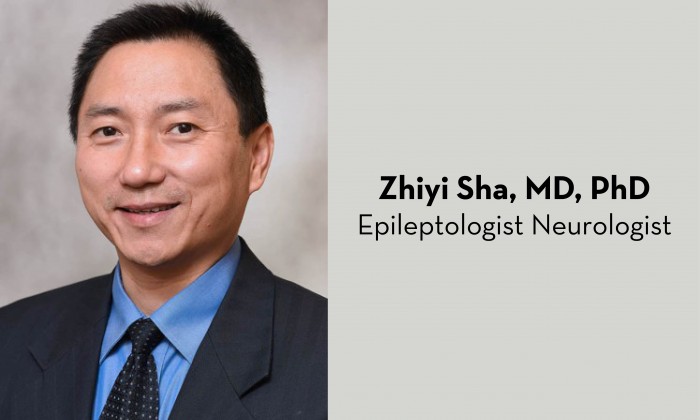
Epilepsy is a complex disease with many treatment options. Finding the right therapy for each person stumps many physicians, but it’s something Zhiyi Sha, MD relishes about his work. He knows he can make a difference in the lives of every patient with medication, surgery, or other treatment, even if he doesn’t cure their epilepsy.
“What I like best about my work is when I see a very difficult patient come through the clinic after a few months of being seizure-free from a different medication that I tried or from surgery,” says Sha. “Both the patient and I are really happy. We see a lot of that.”
An epileptologist, Sha practices at MINCEP Epilepsy Clinic in University of Minnesota Physicians St. Louis Park Clinic and at University of Minnesota Health’s Neurology Clinic. MINCEP is a level-four epilepsy center, meaning that it provides wide-ranging services and treatment options from diverse specialists, including neurosurgeons and neuropsychologists. Sha finds its multidisciplinary approach to be the most effective way to help patients, especially those with difficult-to-treat epilepsy.
An associate professor of neurology and director of the clinical neurophysiology fellowship for the University of Minnesota Medical School, Sha also engages in research. His neuroimaging work uses extremely powerful MRI machines to better identify brain abnormalities that might cause or be caused by epilepsy. He also investigates intracranial EEGs and high-frequency oscillation, seeking the best ways to deploy them for detecting where seizures originate as well as surgical planning.
Currently, many patients need to spend weeks in the hospital for EEG monitoring so that neurosurgeons can find their seizure onset zone—a difficult task. “With the help of high-frequency oscillation, we hope to shorten the period to do presurgical evaluations and do the surgery much quicker,” Sha says. “The patient will have fewer complications, as well as much less time in the hospital and less cost.”
Sha continually works to stay on top of new medications and treatment options. He is particularly excited about neuromodulation, which involves implanting a device to reduce seizures through mild electrical stimulation, and thermal ablation. This minimally invasive surgery relies on lasers to remove brain tissue and stop seizures, causing less trauma and promoting faster healing, Sha says.
He is proud to be part of M Physicians St. Louis Park MINCEP Epilepsy Clinic, with its long legacy of successfully treating people with intractable epilepsy.
“I think we are one of the best epilepsy centers in the world. We’re very good at dealing with complicated cases and we have very good outcomes.”
Zhiyi Sha, MD, PhD